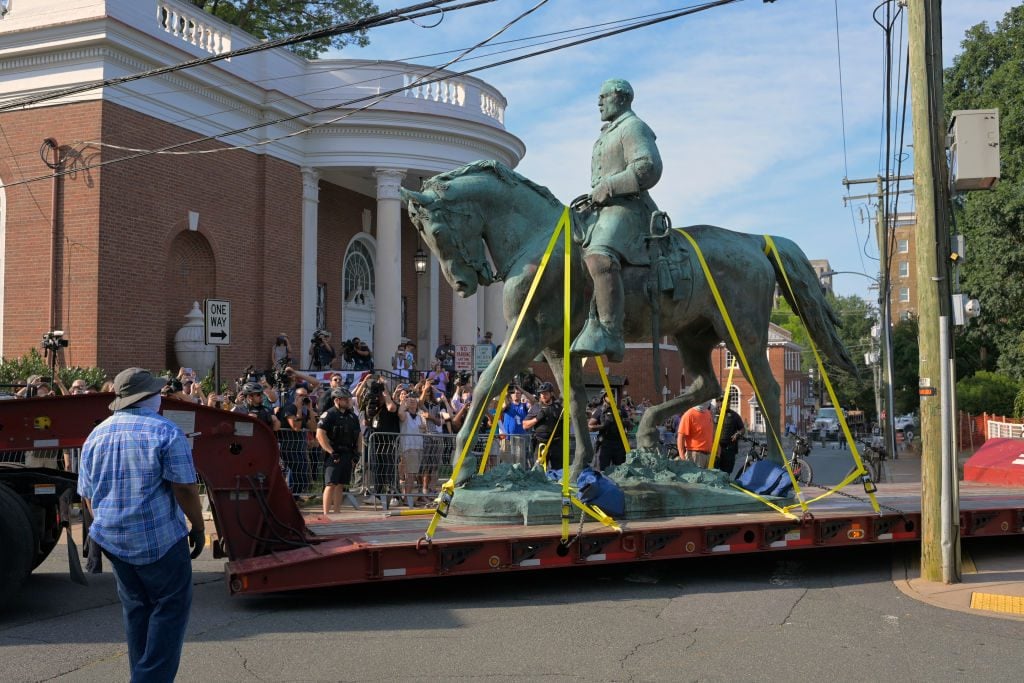Law & Politics
A Judge Green-lit a Virginia Museum’s Plans to Melt Down a Confederate Monument, Dismissing a Lawsuit Attempting to Save It
Charlottesville’s Robert E. Lee statue was the site of the deadly “Unite the Right” rallies in 2017.

Charlottesville’s Robert E. Lee statue was the site of the deadly “Unite the Right” rallies in 2017.

Taylor Dafoe

A Virginia judge will allow a Charlottesville museum to melt down the city’s infamous statue of Confederate general Robert E. Lee after dismissing key parts of a lawsuit attempting to preserve it. The monument was the site of the 2017 “Unite the Right” rally that resulted in numerous injuries and the death of counter-protester Heather Heyer.
The case was brought by the Trevilian Station Battlefield Foundation, which operates a Civil War battlefield in Louisa County, Virgina, and the Ratcliffe Foundation, which runs a museum out of the former home of another Confederate general, JEB Stuart, in Russell County, Virginia.
The two organizations filed the suit shortly after Charlottesville’s Jefferson School African American Heritage Center (JSAAHC) won a bid to melt down the now 99-year-old bronze monument and use it as raw material for a new public artwork. The Trevilian and Ratcliffe Foundations had submitted their own unsuccessful bids to take control of the statue.
In May, the Ratcliffe Foundation was removed from the lawsuit because its corporate status in the state had lapsed in 2015. Then, last week, a circuit court judge ruled that two claims at the center of the Trevilian Station Battlefield Foundation’s case were invalid because the organization had submitted its bid for the Lee statue too late.
The judge did, however, leave the door open for the foundation to sue the city of Charlottesville for allegedly violating Virginia’s Freedom of Information Act.

The statue of Confederate general Robert E. Lee being transferred in Charlottesville. Photo: John McDonnell/The Washington Post via Getty Images.
“The lawsuit has always felt like an attempt to create a distraction from the overall project,” Andrea Douglas, executive director of the JSAAHC, told the Washington Post. “Our goal really is to engage in a conversation about public space—and how one makes those public spaces in the most democratic way possible.”
American sculptor Henry Shrady was commissioned to create the Robert E. Lee memorial in 1917. The project was taken over by Italian artist Leo Lentelli upon Shrady’s death, in 1922, and he completed it in 1924.
In 2017, Charlottesville’s five-member city council voted 3-2 to remove the Lee memorial from view. The decision was subsequently challenged by a lawsuit from multiple plaintiffs, including descendants of the statue’s donor, who claimed that taking down the object violated a state law that protects veterans’ monuments.
In 2019, a judge sided with the plaintiffs and issued a permanent injunction preventing the removal of the memorial. That ruling was overturned by the Virginia Supreme Court in April of 2021, and the injunction was lifted. The Lee monument was finally taken down on July 10, 2021.